Journal of Civil Engineering and Environmental Sciences
Sustainable water supply: Potential of recycling laundry wastewater for domestic use
Omolara Lade* and Zainab Gbagba
Cite this as
Lade O, Gbagba Z (2018) Sustainable water supply: Potential of recycling laundry wastewater for domestic use. J Civil Eng Environ Sci 4(2): 056-060. DOI: 10.17352/2455-488X.000029To reduce the consumption of freshwater in the laundry industry, a new trend of separating waste water has resulted in the reuse/recycling of water. In this study, the characteristics of domestic laundry wastewater was evaluated using wastewater samples from four selected laundries. The samples were analysed for the physicochemical and bacteriological characteristics of the water. The parameters examined were: pH, temperature, conductivity, TDS, TSS, turbidity, colour, total hardness, BOD, COD, DO, phosphate, nitrate, chloride and sulphate. The pH of the wastewater ranges from 8.8 – 9.0, TDS ranges from 229 mg/L to 461mg/L, TSS ranges from 228.9–460 mg/L, Turbidity ranges from 25.3– 39.4 NTU and the colour ranges from 4.2-5.8 TCU. The BOD ranges from 144– 211.2 mg/L and the COD ranges from 428.6-531.3 mg/L. The Total Coliform and E.coli in the wastewater ranges from 140-700 CFU. The pH, TDS, colour, total hardness, total coliform and E.coli are within permissible level for toilet and laundry water reuse while TSS, turbidity, BOD and COD exceeds the limit. The result of this study reveals that there is a high potential of recycling laundry waste water for reuse in toilet, irrigation and laundry with little treatment.
Background
Water resources are abundant, but they are unevenly distributed: 97% of water available on earth is related to the seas and oceans, 2.97% as polar ice caps while the remaining 0.03% are surface waters [1]. In water shortages, three key methods: water conservation, desalination and recycling could be considered. Due to lower costs and possibility of wastewater treatment in waste production site, water recycling is much better than the other two methods [2,3].
Toilet waste water (including urine, brown-water), has a volume of 10,000-25,000 L/person/year. Grey water (kitchen and laundry, excluding the toilets, water from personal hygiene) has a volume of 25,000-100,000 L/person/year [4]. Grey water sources such as domestic, industrial and hospital laundry waste water could be refined, recycled and reused [5]. Industrial washing laundries uses about 15 L of water for washing 1 kg of clothes, which produces an average of 400 m3 wastewater daily [6].
Household water use is the second largest user of water in Australia and approximately 20% of overall Australia household water usage is from laundry. Significant fresh water savings could be achieved by replacing potable-quality water used for clothes washing with recycled water. Several studies on the use of recycled water for washing machines have been carried out.
Dolnicar and Saunders [7], reviewed eight American studies and found that the average willingness on use of recycled water was 80%. In a survey on public attitudes towards recycled water, Ngo et al. [8], found public health, water clearness, cost and machine durability as major concerns of public. Pham et al. [9], performed similar surveys in Sydney and revealed that only 60% of the respondents supported the use of recycled water in washing machine.
Laundry wastewater contain organic (soaps, detergents, chlorinated and aromatic solvents and biological substance, fats, grease and oil) and inorganic (heavy metals, sand and soil dust, metal ions and particles) substances that make treatment difficult. They typically have a Chemical Oxygen Demand (COD), Biological Oxygen Demand (BOD) and Total Suspended Solid (TSS) level of 5000, 1300 and 1000 ppm respectively. A COD level 20, 000 ppm is also observed in some cases [6,10]. The average analysis of domestic, industrial and hospital laundry waste water is presented in table 1.
Different countries have several standards for the quality of recycled water. Some countries have strict laws and regulations while others do not. A summary of the important parameters for the quality of recycled water for reuse in toilets, irrigations and laundry based on the international and Iran IPEA regulations and standards is presented in table 2.
In the treatment of laundry waste water, conventional treatment methods such as adsorption, flotation, coagulation, biological and chemical treatment could be applied [19]. Few studies have been carried out on the treatment of laundry wastewater thus making this area a potential ground for further research. This study focuses on the following main points:
a. Identification of the sources of water, mode of washing, detergents and bleach used in selected laundries
b. Examination and evaluation of wastewater generated in typical laundries in the study area
c. Evaluation of the potential of collecting, treating and recycling of laundry wastewater
Equipment and material
Domestic laundry wastewater was used as a raw feed. The wastewater was obtained from a washing machine (Figure 1.1) as well as manual wash (Figure 1.2) from four laundries in Ibadan, Nigeria:
1. Tedder hall laundry, University of Ibadan, Ibadan.
2. Sil garment care, Samonda, Ibadan.
3. Wumex Laundry Services, Aare Bodija, Ibadan.
4. Flashpoint Laundry Services, U.I post office, Ibadan.
Method
Laundry wastewater samples were characterised to determine the physical, chemical and bacteriological parameters. The parameters under study include pH, temperature, conductivity Total Dissolved Solids (TDS), Biological Oxygen Demand (BOD), Chemical Oxygen Demand (COD), Dissolved Oxygen (DO), Phosphate, Nitrate, Chloride, Sulphate and Total Kjeldahl Nitrogen (TKN). All the parameters were analysed in accordance with Standard Methods for the Examination of Water and Wastewater [20]. Total Coliform and E. coli counts were determined using membrane filtration technique.
Sampling
Wastewater samples were collected from four different commercial laundries in Ibadan: washing machine and hand (manual) washing in the month of November 2014 according to standard procedures [20]. The physical properties of the water samples such as pH and temperature were recorded at the collection site. Two samples were obtained from different laundries through machine and manual washing. The method adopted for collection of samples are as follows:
1. A litre of freshwater from the water source used in washing the laundry was collected in a clean bucket.
2. A litre of wastewater from the washing process was also collected and added to the collecting bucket. In the case where the textile was washed twice, a litre each of the first and second wash wastewater was collected into a separate bucket, and a litre of the mixture was collected and added to the bucket containing the freshwater source.
3. A litre of wastewater from the rinsing process (Figure 1.3) was also collected and added to the same bucket. In cases where the textile was rinsed twice, a litre each of the first and second rinse wastewater was collected into a separate bucket, and a litre of the mixture was collected and added to the collecting bucket containing the freshwater and the wash wastewater.
4. The collecting bucket containing the mixture of freshwater, wash wastewater and rinse wastewater was stirred thoroughly, and a litre of laundry wastewater sample was collected in a plastic bottle from the mixture (Figure 1.4)
After collection, the samples were transferred to the laboratory at Department of Environmental Health Sciences, College of Medicine, University of Ibadan immediately for qualitative analysis. The samples were stored at 4 0C to avoid any physical-chemical changes in the wastewater.
About 10 ml of laundry waste water samples were filtered using cellulose nitrate membranes, which were incubated for up to 48 h after being placed on different culture media. Escherichia coli and Total coliform were enumerated using Plate count agar (Merck, Germany). The Total coliform and E. coli were determined by counting the plates after incubation.
The results were compared with the International and Iran IPEA regulations and Standards for the quality of recycled water for reuse applications in toilets, irrigations and laundry.
Results and Discussions
The physical characteristics of the laundry wastewater samples are reported in figures 1.5 and 1.6. The data reveals that the water is alkaline in nature. The pH of the wastewater is within the standard guideline value for toilet and laundry water reuse which ranges from 6.0 – 9.0. TDS ranges from 229 mg/L to 461mg/L which is within the permissible limit (1000-2000 mg/L). TSS of the wastewater ranges from 228.9–460 mg/L which is higher than the permissible limit of 10-30 mg/L. This is due to the presence of soap and dirt contaminates. Turbidity of the wastewater ranges from 25.3– 39.4 NTU which is high when compared to the standard for laundry water reuse of 2 NTU. However, it is within the permissible limit for toilet flushing and landscape irrigation which has no limit. The colour of the wastewater (4.2-5.8 TCU) is within permissible limit of 12 TCU which is the drinking water standard thus suitable for reuse in other applications. In wastewater treatment, colour is an indicator of the condition of the wastewater.
The chemical characteristics of the laundry wastewater sample was reported in figure 1.7. It was observed that water quality parameters such as: Total Hardness, DO, Chloride and TKN are within the standard permissible limits for domestic water guidelines value.
Total hardness of the wastewater is within permissible limits, an indication that the water is soft and can form lather easily with soap. Water is considered hard when it has relatively high levels of calcium, magnesium and other metals. DO is also within the standard domestic water guideline value, an indication of the presence of oxygen dissolved in water. TKN indicates the nitrogen content in the wastewater is within permissible limits for domestic water guideline.
The BOD and COD of the wastewater exceeds permissible limits, the BOD ranges from 144– 211.2 mg/L and the COD ranges from 428.6-531.3 mg/L. The permissible limit for BOD is 10-30 mg/L for laundry and toilet flushing respectively. BOD is a measure of the organic material in wastewater plant effluent. It is the amount of oxygen used by microorganisms in the oxidation of organic matter. If the amount released in the effluent is too high, microorganisms in the receiving waters will consume the organic material utilizing DO as they do so. This depletes the DO available to aquatic life and results in death of fish, invasions of weeds, and changes in the body of water. COD is a measure of the chemical decomposition of organic and inorganic contaminants (dissolved or suspended). The higher the COD, the higher the amount of pollution in the wastewater.
Phosphate and Nitrate in the wastewater also exceeds the permissible limits. The phosphate content is very high in the wastewater: values ranges from 196.5–240.2 mg/L, the permissible value for domestic water is 5 mg/L. The nitrate content ranges from 197.4–242.6 mg/L, the standard domestic water value for nitrate is 20 mg/L. The high content of phosphate in the wastewater indicates that cleaning agents with high phosphate content were used for washing. Phosphates are the essential constituents of synthetic detergents, they become detrimental when they are released into water bodies. The nitrate present in the wastewater is the oxidised form of nitrogen, together with phosphate in excess amounts can accelerate eutrophication, causing dramatic increase in aquatic plant growth hence affecting DO, temperature and other indicators.
The Total Coliform and E.coli in the wastewater ranges from 140-700 CFU and are within permissible limit of 25-800 CFU for laundry and toilet reuse as presented in figure 1.8.
Conclusions
Grey water (kitchen and laundry, excluding the toilets, water from personal hygiene) has a volume of 25,000-100,000 L/person/year. Grey water sources such as domestic, industrial and hospital laundry waste water could be refined, recycled and reused. Industrial washing laundries uses about 15 L of water for washing 1 kg of clothes, which produces an average of 400 m3 wastewater daily. This led to this study, investigating the potential of recycling laundry waste water for reuse.
The characteristics of domestic laundry wastewater was evaluated using wastewater samples from four selected laundries. The samples were analysed for the physical, chemical and bacteriological characteristics of the water. The parameters examined were: pH, temperature, conductivity, TDS, TSS, turbidity, colour, total hardness, BOD, COD, DO, phosphate, nitrate, chloride and sulphate.
The pH of the wastewater ranges from 8.8 – 9.0, TDS ranges from 229 mg/L to 461mg/L, TSS ranges from 228.9–460 mg/L, Turbidity ranges from 25.3 – 39.4 NTU and the colour ranges from 4.2-5.8 TCU. The BOD ranges from 144 – 211.2 mg/L and the COD ranges from 428.6-531.3 mg/L. The Total Coliform and E. coli in the wastewater ranges from 140 -700 CFU. The pH, TDS, colour, total hardness, total coliform and E. coli are within permissible level for toilet and laundry water reuse while TSS, turbidity, BOD and COD exceeds the limit.
The laundry wastewater can go through microfiltration (MF) process for reuse directly for landscape or sanitary toilet flushing without the need for further post-treatments but may not meet the desired COD standards for direct use as laundry water. Hence, different strategies can be considered for using MF method based on the region and situation. The selected strategy for treating laundry waste water should be based on the desired standards, availability of fresh water and the final use points.
- Shirazi MMA, Kargari A, Shiraz MJA (2012) Direct contact membrane distillation for seawater desalination. Desalin Water Treat 49: 368-375. Link: https://goo.gl/gvo7AS
- Dolnicar S, Schafer AI (2009) Desalinated versus recycled water: public perceptions and profiles of the accepters. J Environ Manag 90: 888-900. Link: https://goo.gl/r6RDEs
- Lu W, Leung AYT (2003) A preliminary study on potential of developing shower/laundry wastewater reclamation and reuse system. Chemosphere 52: 1451-1459. Link: https://goo.gl/2kYyQn
- Wendland C, Albold A (2010) Sustainable and Cost-effective Wastewater Systems for Rural and Peri-urban Communities up to 10,000 Population Equivalents: Guidance Paper. Women in Europe for a Common Future (WECF), Munch, Germany. Link: https://goo.gl/Kv4Neq
- Pakula C, Stamminger R (2010) Electricity and water consumption for laundry washing by washing machine worldwide. Energy Effic 3: 365-382. Link: https://goo.gl/FSRrSJ
- Ciabatti I, Cesaro F, Faralli L, Fatarella E, Tognotti F (2009) Demonstration of a treatment system for purification and reuse of laundry wastewater. Desalination 245: 451-459. Link: https://goo.gl/wbyLPt
- Dolnicar S, Saunders C (2005) Marketing recycled water: review of past studies and research agenda. Integrated concepts in water recycling. Wollongong: University of Wollongong, Australia. 181-92. Link: https://goo.gl/e2Xut2
- Ngo HH, Chuang H, Guo WS, Ho DP, Pham TTN, et al. (2009) Resident’s strategy survey on a new end use of recycled water in Australia. Desalination Water Treatment 11: 93-97. Link: https://goo.gl/ps92VH
- Pham TTN, Ngo HH, Guo WS, Dang HPD, Mainali B, et al. (2011) Response of community to the public use of recycled water for washing machine: a case study in Sydney, Australia. Resource Conservation Recycling 55: 535-540. Link: https://goo.gl/utc1kc
- Janpoor F, Torabian A, Khatibikamal V (2011) Treatment of laundry waste-water by electrocoagulation. J Chem Technol Biotechnol 86: 1113-1120. Link: https://goo.gl/jkVdB9
- Berstein M (1986) Water and Wastewater: a Guide for Industrial Launderers, first ed. Institute of Industrial Launderers, Washington DC, USA.
- Browner CM, Charles FJ, Frace SH, Rubin MB, Jordan M (2000) Technical Development Document for the Final Action Regarding Pretreatment Standards for the Industrial Laundries Point Source Category. EPA Report No. 821-R-00-006. Link: https://goo.gl/yVBGa6
- Imhof B, Muhlemann J (2005) Grey water treatment on household level in developing countries – a state of the art review. Department of Environmental Sciences at the Swiss Federal Institute of Technology (ETH), Zurich, Switzerland. Link: https://goo.gl/hzw5x9
- Seneviratne M (2007) A Practical Approach to Water Conservation for Commercial and Industrial Facilities, first ed. Elsevier, Massachusetts, USA. Link: https://goo.gl/FrQhXz
- Kist LT, Albrecht C, Machado EI (2008) Hospital laundry wastewater disinfection with catalytic photoozonation. Clean Soil Air Water 36: 775-780. Link: https://goo.gl/GUgA8F
- Amouei A, Asgharnia H, Fallah H, Faraji H, Barari R, et al. (2015) Characteristics of effluent wastewater in hospitals of Babol University of Medical Sciences. Babol, Iran. Health Scope 4: e23222. Link: https://goo.gl/h1N27W
- Shaeri AM, Rahimi AR (2013) Human Environmental Laws, Regulations, Criteria and Standards, Iranian Environmental Protection Agency. Hak Publisher, Tehran, Iran, ISBN 978-600-6682-07-5.
- Levi Strauss and Co (2014) IS & Co. Water Recycle/Reuse Standard. Link: https://goo.gl/QztHSK
- Giagnorio M, Amelio A, Gruttner H, Tiraferri A (2017) Environmental impacts of detergents and benefits of their recovery in the laundering industry. J Clean Prod 154: 593-601. Link: https://goo.gl/3kdm1R
- APHA (2005) American Public Health Association (APHA), American Water Works Association (AWWA) and Water Environment Federation (WEF). Standard methods for the examination of water and wastewater (21th ed.), APHA, Washington, DC. Link: https://goo.gl/hMf7Ed
Article Alerts
Subscribe to our articles alerts and stay tuned.
 This work is licensed under a Creative Commons Attribution 4.0 International License.
This work is licensed under a Creative Commons Attribution 4.0 International License.
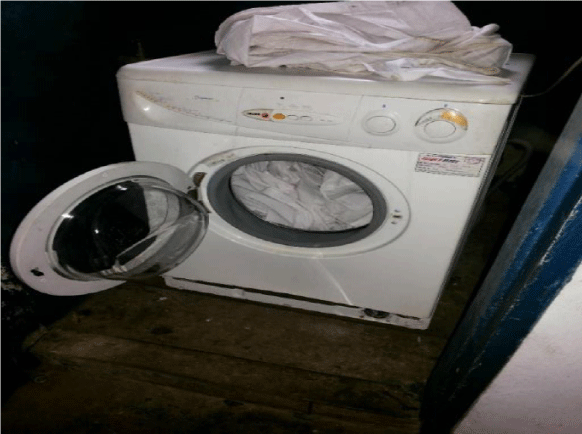
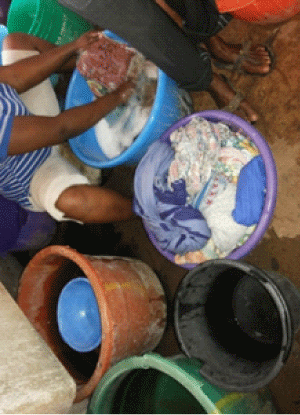
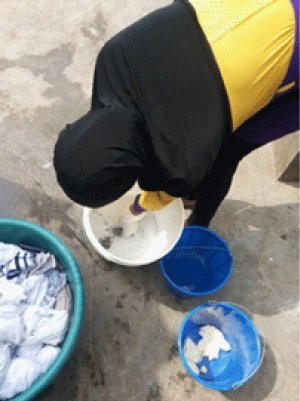
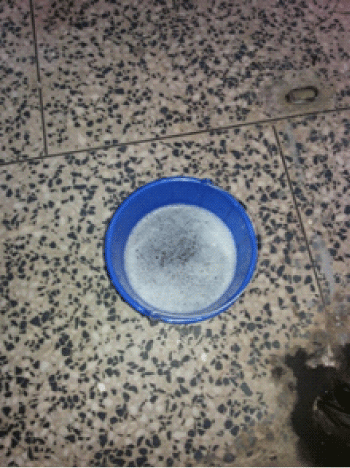
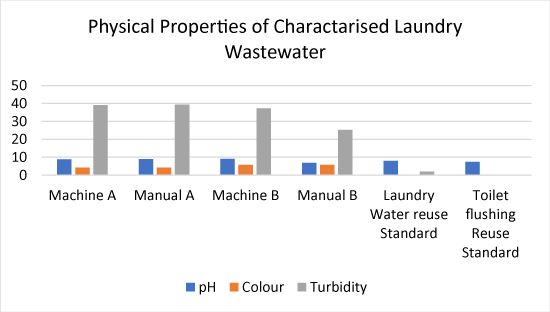
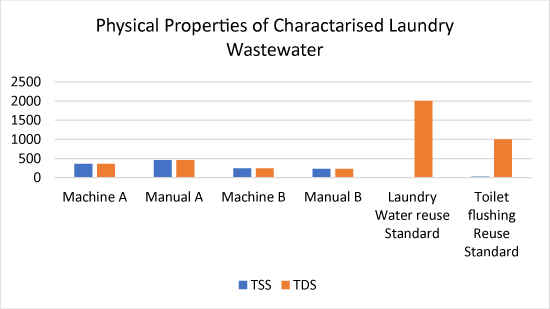
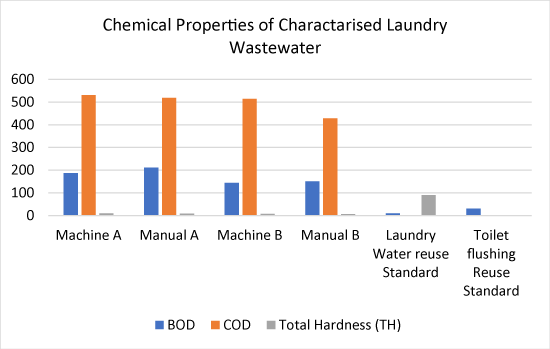
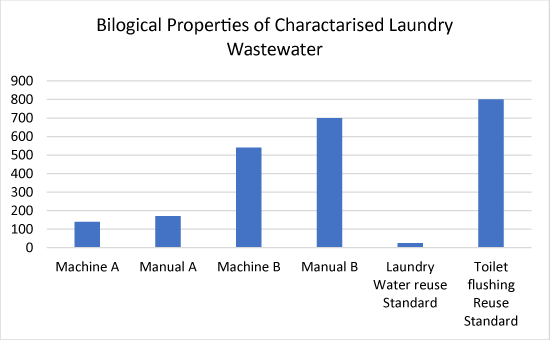

 Save to Mendeley
Save to Mendeley
